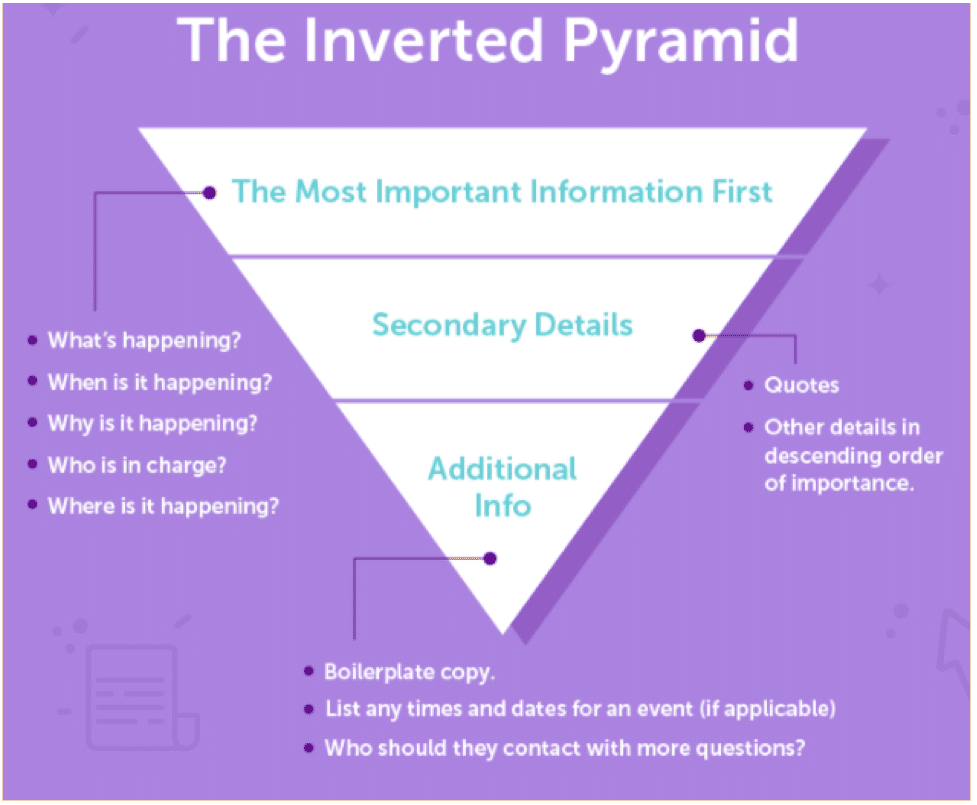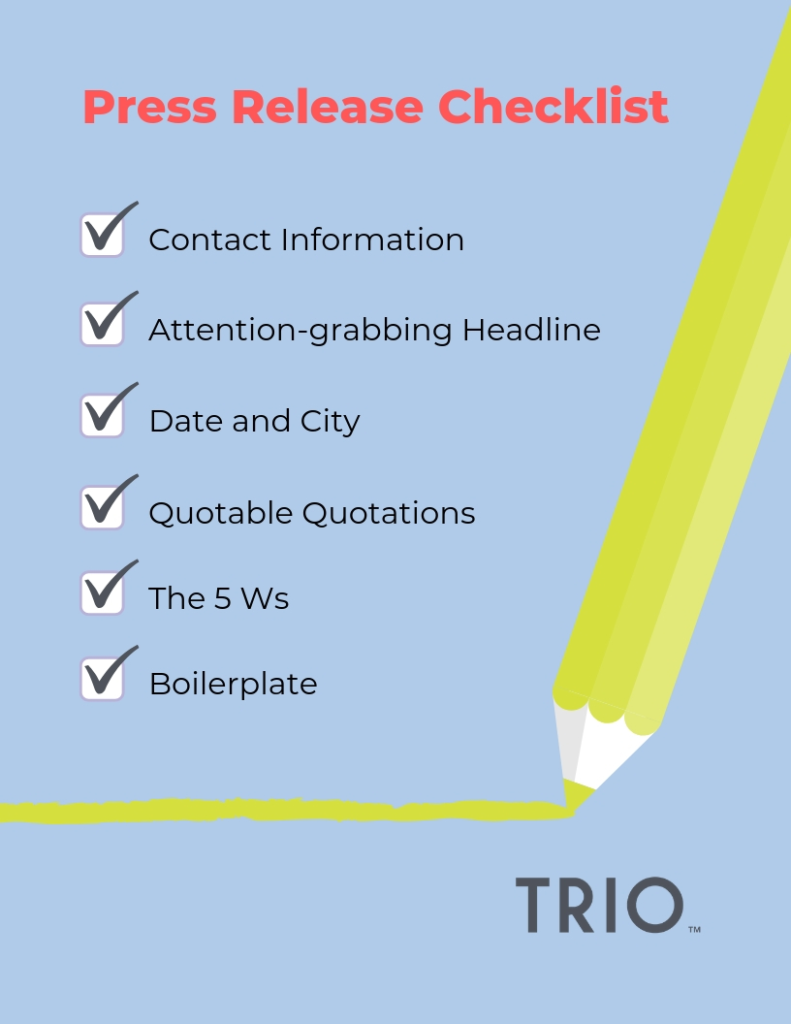
Table of Contents
- The Best Press Release Tips: 6 Don’ts of Writing a Press Release
- Key Takeaways
- Conclusion
- FAQs
Press releases have always been a significant part of a brand’s success. They convey to the masses what your brand is doing, through the coverage by news and media outlets. Whether it is an event, product launch, or announcement for future events, the decision of running a press release rests on the journalist, news outlet, or print media house. And they prioritize the interest of their readers above all else.
A successful public relations professional follows a few dos—and more importantly—don’ts of writing a press release. Here are the top press release tips for you to write smashing copy that is hard to be rejected.

The Best Press Release Tips: 6 Don’ts of Writing a Press Release
When talking about the tips for writing a press release, it is imperative to discuss what you must not do. Read on for helpful press release tips—or more importantly, the don’ts of writing a press release.
1. Don’t craft a press release around any topic
The most obvious press release tip is having a solid topic in mind. It is as important as writing the press release. How can you find the right topic for your press release? Here are a few points.
- Write about a particular event that is newsworthy.
- Get a conversation started around a subject that is not talked about enough. And then introduce what your business is doing to help the situation.
- Choose a topic that will have a positive impact on the market, and create a positive impression of your brand.
- Choose an informative topic, such as industry trends, or a product launch or rebrand.
- Write about relevant products or services offered by your brand.
2. Don’t complicate it
The most underrated tip for writing a press release is that you should make it easy for the reader to understand your message. Jargon and difficult words are a huge turn-off, even for the most voracious reader. Make your writing simple enough for a 10-year-old to understand. Additionally, structure it well so that it flows seamlessly into a pyramid model, with the most crucial information at the beginning.

Press releases have a well-defined structure, and in most cases, it’s best to stick to it. This is not to say you can’t infuse the content with your brand’s personality.
3. Don’t drag the story
Brevity in content is your best friend here. Practice KISS, which is an abbreviation for “Keep It Short, Silly.” Get the message across to your audience in a concise and easy-to-consume way, without skimping on details. Adding unnecessary fluff would definitely backfire, as people don’t really have a lot of time to wade through muddy waters.
4. Don’t lie
This press release tip sounds like a given: but don’t lie in your copy. Your press release should be factually correct and not exaggerated at all. At the same time, don’t stretch the definition of “objective” or try to find loopholes, because misguiding your reader is not a great way to build, sustain, or grow a brand.
5. Don’t forget to optimize it for search engines
In this digital age, when every published article is consumed on Google (and other search engines), it is imperative to optimize your press release. Highlight the keywords in the heading, subheadings, and throughout the body of your report. Add a meta title and description that will inform the readers what your article is about, and whether it is the complete story about the subject.
Furthermore, the chief advantage of digitally publishing press releases is that it can help build high-quality backlinks. This will help with your website’s SEO. So make sure the backlinks are marked “dofollow.”

6. Don’t just submit to any publication
This is one of the least talked-about press release tips. Your research on the subject begins with who your reader is. And that comes from knowing where you will publish the press release. Some factors to bear in mind are as follows:
- Reach and authority of the agency or platform: You can judge this by the monthly web traffic and domain authority (DA) of the site.
- Audience: does that site cater to your industry or niche? Is it popular among your target audience?
- Reputation: is it a reliable and reputable publication, or is it a brand in its own right?
- Brand voice: while this is not a deal-breaker, make sure they do publish articles with a predominant brand voice or tone. Most press releases are written with an informational tone, but are flexible, with a brand personality shining out through the content.
Key Takeaways
- Pick a topic for your press release after careful research.
- Keep it simple and concise.
- Make the headline attractive and content detailed enough for the reader to see the full picture.
- Maintain your brand voice when writing in third person, with an objective point of reference.
- Optimize for search engines.
- Research media houses before submitting the release to them.
Conclusion
The most essential press release tips is to use a factual tone and be as concise as possible, giving the reader the essence of the story. In this digital era, it is also important to include your contact details or website links, so that they can reach out to you for more information.
FAQs
A press release should not exceed one page in A4 print, which comes to around 400-500 words.
To be on the safe side, include not more than three quotes. The purpose of the quotes is to drive home the point you’re making and leave an impact on the reader.
Here are some crucial tips for writing a press release.
1. Keep it concise.
2. Avoid using jargon, use simple and comprehensible language.
3. Research your target audience well.
4. Know your topic well.
5. Optimize it for search engines.
6. Ensure it has a boilerplate, carrying the company’s details, at the end.
A press release is a piece of content that is sent to news and media organizations. It usually carries information that is meant to be published in different publications.
Latest Blogs
Learn how to rank on AI search engines like ChatGPT, Perplexity, and Gemini by optimizing your content for authority, structure, and relevance. Stay ahead in AI-driven search with this strategic guide.
Explore the best healthcare SEO services for your medical practice. Improve online visibility and effectively reach more patients in need of your services.
Discover top social media agencies specializing in banking solutions, enhancing financial services and driving engagement.
Get your hands on the latest news!
Similar Posts

B2C Marketing
5 mins read
Top Choices for Best Content Marketing Services in B2B Industries

Artificial Intelligence
5 mins read
How A Lead Generation Specialist Can Use AI-Powered Content Funnels to Drive Conversions

Artificial Intelligence
4 mins read